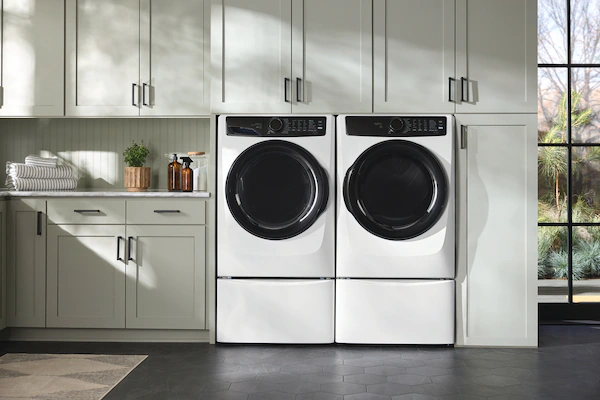Why Is My Washer Not Draining? 4 Causes and Solutions

Opening your washer to find it still full of water usually means there’s a drainage issue. The cause could range from a blocked hose to a small item stuck where it shouldn’t be, or even a faulty pump. Understanding these common problems can help you resolve the issue more quickly and get your clothes into the dryer without having to haul out water by hand.
1. Clogged Drain Hose
One of the main reasons a washing machine stops draining is a blockage in the drain hose. Over time, things like lint, small fabric threads, or other debris can build up inside the hose, preventing water from exiting the drum properly during the spin cycle. This leaves clothes sitting in leftover water instead of draining out as they should.
How to Fix It
If you’re confident with hands-on fixes, clearing a blocked drain hose is something you might handle yourself. A flexible tool like a plumbing snake can be fed through the hose to reach and loosen any built-up gunk, which you can then remove. Some people also try a mix of baking soda and vinegar, followed by hot water, to help clear minor clogs. Not feeling up to tackling it solo? A local appliance technician can take care of it for you.
2. Faulty Pump
If the drain hose isn’t the problem, the culprit might be the pump. It could be jammed, leaking, have a damaged belt, or a worn-out impeller. You might notice odd sounds or water escaping from the machine during a cycle—both are common signs that something’s wrong inside. To get to the root of it, you’ll need to inspect the pump closely and see what’s going on.
How to Fix It
Check your washer’s manual to find out exactly where the pump sits and what components it involves. If the pump’s no longer doing its job, swapping it out might be necessary. You can handle the replacement on your own if you’re equipped and confident, or reach out to an SD Appliance Repair technician for help. Fixing this kind of issue usually comes with a price tag somewhere in the $165–$490 range, depending on what’s gone wrong.
3. Lid Switch Issue
In many top-load washers, there’s a built-in switch that senses if the lid is shut. When that switch fails or gets damaged, it can stop the machine from draining—or even keep it from starting altogether.
How to Fix It
Try pressing down on the lid switch to test whether it’s still working. If there’s no audible click, that might mean the switch is damaged and needs a replacement. If you’re familiar with the part and how to swap it out, you can take care of it yourself. If not, and especially if your washer’s still under warranty, it’s worth reaching out to the manufacturer or getting in touch with a nearby repair service.
4. Filter Blockage
Certain washing machines are equipped with a drain filter that gradually collects lint, small objects, and other debris. If it gets too full, water might not drain as it should, causing issues until the filter is cleaned out.
How to Fix It
To keep things running smoothly, it’s a good idea to clean the drain filter regularly—anywhere from once a month to every few months, depending on how often you use the washer. You’ll usually find the filter hidden behind a panel near the lower front of the machine. Take it out, rinse it under warm water, let it dry, and reinstall it once it’s clean.
When to Call a Pro
Repairs vary in complexity—while some tasks, such as cleaning filters or drains, can be managed by those comfortable with DIY projects, more complicated fixes are better left to certified technicians. If you don’t have the right tools, experience, or time to replace parts safely, it’s wise to call an SD Appliance Repair professional. This ensures the issue is properly resolved without any guesswork.
You Appliance Will Be Fixed!
in San Diego, CA
REQUEST SERVICE
Book a Repair Appointment

